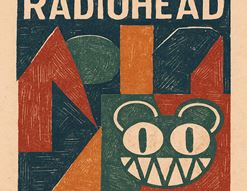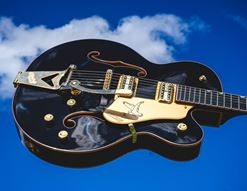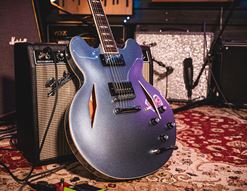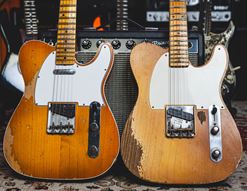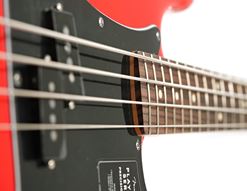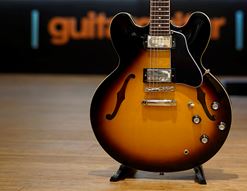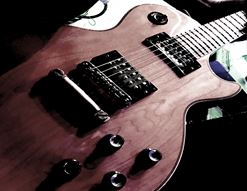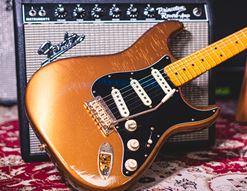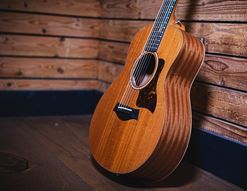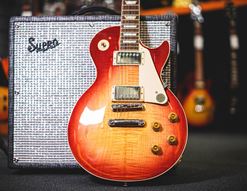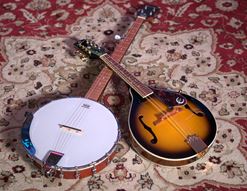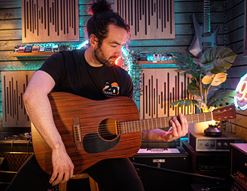Why on earth do you need a blog telling you how to play an electric guitar at home?
You’ve already been doing that for years! What an insult!
Settle down, now. We mean no affront! We’ve just noticed that, in this current age, there are a wide variety of completely different options open to you in terms of ‘amplifying’ your guitar. An actual amplifier is only one of many methods, and we think it’s high time we investigated the benefits and potential drawbacks of each of these! And not only are there many benefits to amplifying your guitar at home, there are also many other positives that you experience when playing guitar, learn more about the positive effects of playing guitar with our article The Benefits of Playing Guitar.
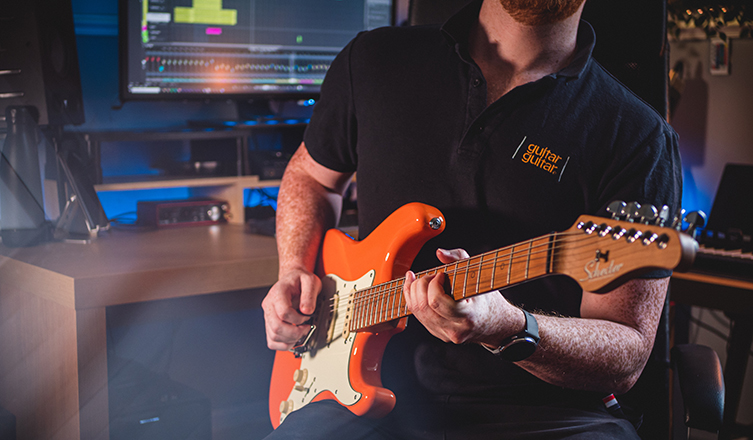
In this blog, you’ll find ideas and solutions for those who need a suitable amp for home use, ways to utilise an amp if you already have one you love, and also future-forward methods for those who eschew the whole notion of an amp altogether! It’s guitar playing, but not as we know it!
What we won’t be doing is telling you which method is the best. Hopefully, we’ll explain why you may want to try a certain product or method, but we expect you’ll be able to visualise how these concepts fit into your life better than we can. Great tone is closer at hand than ever before, and it’s less about money now than it once was. This is great news for us all, no matter how you want to go about it. Now, let’s begin with the traditional approach of plugging into an amplifier…
I Need an Amp!
So, you want to plug into an amplifier. That makes sense to us! It’s the most familiar way of ‘hearing’ your electric guitar, after all, and the way most guitarists feel comfortable going about their tone-getting!
The trouble is, there are a great number of amplifiers out there, and they all want to be bought by you! How to tell which is going to work best for you?
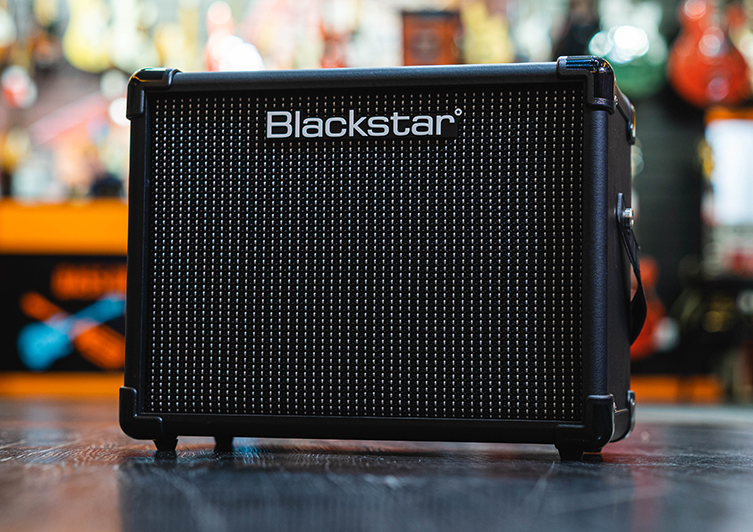
Small Valve Combos
Indeed, how! Well, let’s make this a little simpler. First off, unless you live in a country manor, we can assume that you have neighbours either directly around you or at a reasonably close distance. This means, sadly, that the huge epic rock stack you’re currently hovering over with your mouse pointer is going to be complete overkill for home use. Let’s face it, even Jimmy Page leaves his Marshall stacks in storage.
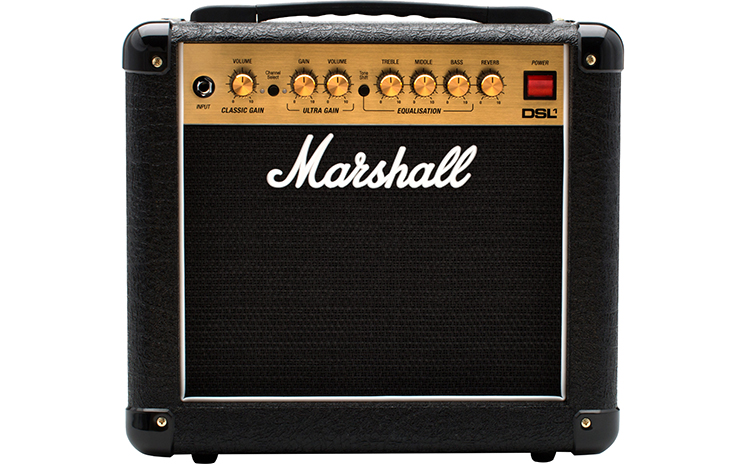
So, we’ll be looking at lower volume amps. Next thing is to determine your needs. Are you looking for a good ‘base tone’ to then colour with effects pedals? If so, a simple combo with a good clean sound is a good idea. Low wattage valve units like the Blackstar HT-1R Mk II or the Marshall DSL1CR will give you true valve tone at very low volumes. They don’t have lots of features because the focus is on creating a simple, high quality signal path. You can pepper your sound with pedals, and adjust to taste. It’s ‘real valve tone’ for sure, but let’s not assume a 1w Marshall is going to sound the same as a 100w Marshall. Physics comes into play here, so keeping expectations realistic and just judging with your ears will be the best way forward. These amps are also great for recording, since their peak tone - when the power section is maxed out - isn’t going to be obnoxiously loud.
Digital Modelling Practice Amps
A more popular option for homes is what we generally refer to as ‘practice amps’. Practice amps, these days at least, are generally digital amplifiers with a wide selection of ‘modelled’ amp and effects sounds. In other words, the circuit inside mimics a ton of famous and usually expensive amp tones, and lets you switch between them at the touch of a button. You can also dial in lots of fun effects like reverbs, delays and flangers for a pretty comprehensive sonic arsenal, all available in the one box.
Because these amps are digital, the volume you use them at bears less influence over the resulting sound, so they’ll sound the same at really low volumes as they will at higher volumes. Every major company offers something in this department, so checking out demos on the guitarguitar YouTube channel is a great way to learn up on what’s going to be suitable for you. Popular amps in this particular area include Fender’s Mustang GT range, Blackstar’s Core ID amps and the new Catalyst range from Line 6, who are perhaps the best known brand for digital modelling amps. The Positive Grid Spark is an interesting mix of digital practice amp and ‘plugin’, which we’ll look at later. This amp works with an app to allow you to entirely define which sorts of sounds you use, right down to details of amp components! It’s simpler than it sounds, and the results are very impressive.
Mini Boutique Amp Heads
Now, don’t go thinking that you can’t have a roaring stack in your home, okay? You absolutely can, but you’ll either have to use an additional bit of gear with it (which we’ll talk about slightly later), or you could downsize things and go for a small boutique mini head.
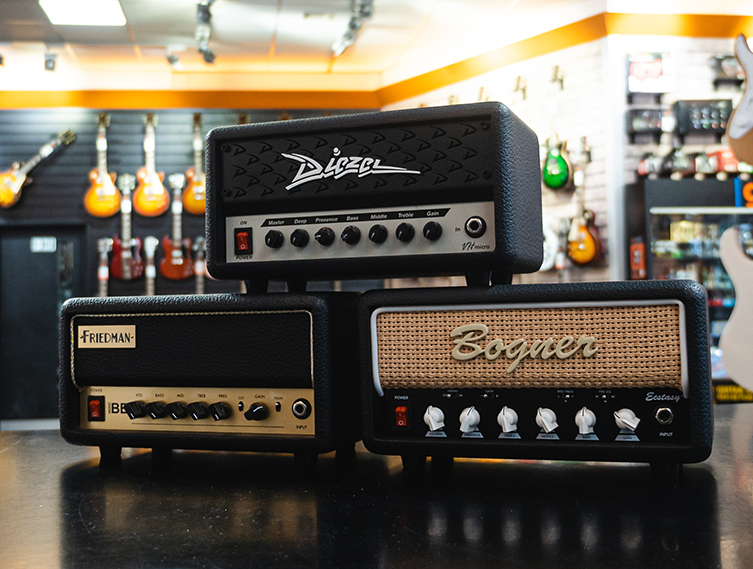
These are pint-sized solid state recreations of some of the most prized boutique amp heads on the market. Top name brands - Bogner, Friedman and Diezel - have all delivered their signature overdrive tones to these mini heads, so if you favour more overdriven and distorted sounds, these are a very effective and affordable way of buying excellent tone. They are single channel amps, so keep that in mind if you love switching from clean to heavy: you’d need a distortion pedal, which of course defeats the entire purpose of purchasing a high gain amp! However, if you’re quite happy to stay on the glorious ‘filth’ channels provided by these amps, simply match your chosen head up with any suitable cabinet (these heads can support 8 and 16 ohms) for a 30 watt mini stack that will sound like a million bucks! They take up very little room too, so they are very easy to incorporate into your playing space, wherever in the house that may be.
I Already Have an Amp!
So, you’ve already done your research, tested out endless possibilities, and chosen your dream amplifier. Good for you! It’s a thrill to plug into something that sounds out of this world to your ears. It’s every player’s dream, really.
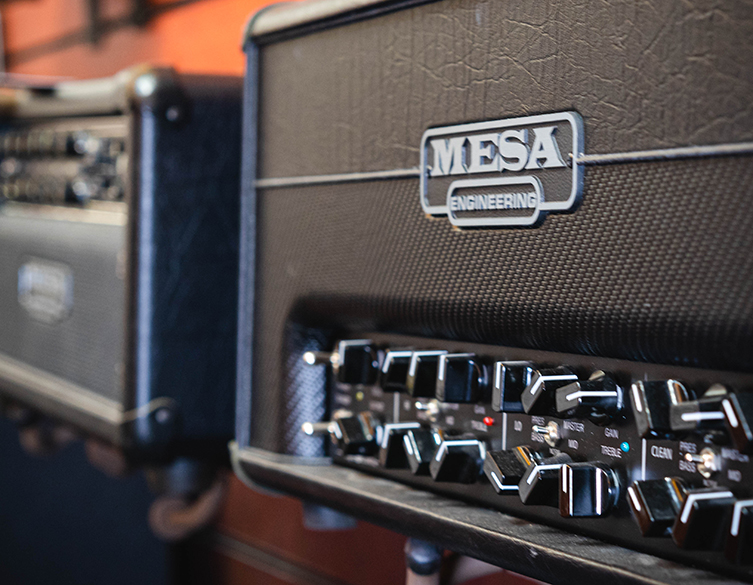
Except something’s not quite right, is it? When you’re playing at home, you can’t wind your amp up to a suitable enough level to unleash those prime valve tones, so you have to settle for your superb setup running at a fraction of its optimal performance. The results are a little flatter and drabber than your dreams. How can you sort this out, and have it sounding its best without a ‘friendly’ knock at the door every night?
We have a suggestion for you…
Attenuators
Attenuators, or reactive load boxes, are used with louder valve amps in order to achieve maximum tone at minimal volumes. The Fryette Power Station attenuators are such devices, and they work by creating a reactive load, which mimics the behaviour of a speaker. The attenuator then reduces the power level but keeps the tonal characteristics as they are, meaning you can enjoy ‘full power tube tone’ at very low volume levels.
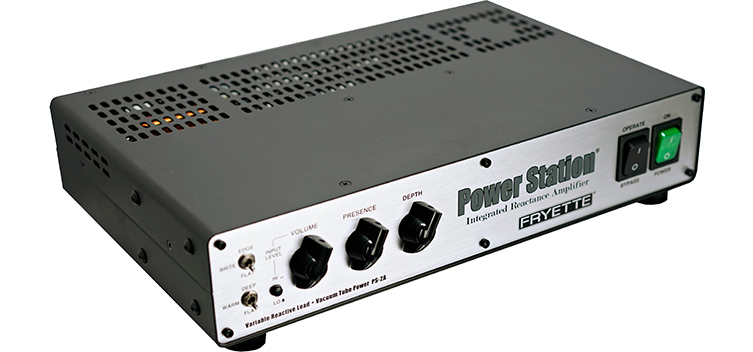
Suhr also make their own version of this, called the Reactive Load I. R.. Universal Audio make one called the Ox Box. All of these devices have their own features and benefits, and whilst the Fryette models are perhaps the most comprehensive, it’s fair to say that all of them do a great job of accurately capturing your expensive amp tones and feeding them to you at a much more sociable volume!
I Don’t Want an Amp!
Okay, you’ve decided that a big box with a speaker in it is just not for you at all. You do not want an amplifier. Up until even a few years ago, you’d be out of luck for alternatives, but we are currently living in a veritable space age of music tech these days, and so there are in fact a number of great sounding and completely valid routes you can take towards great tone, none of which are requiring of an amp. The most obvious choice is a digital modelling unit, of either the desktop or floor-based type. We’ll look at them first, and then examine other options.
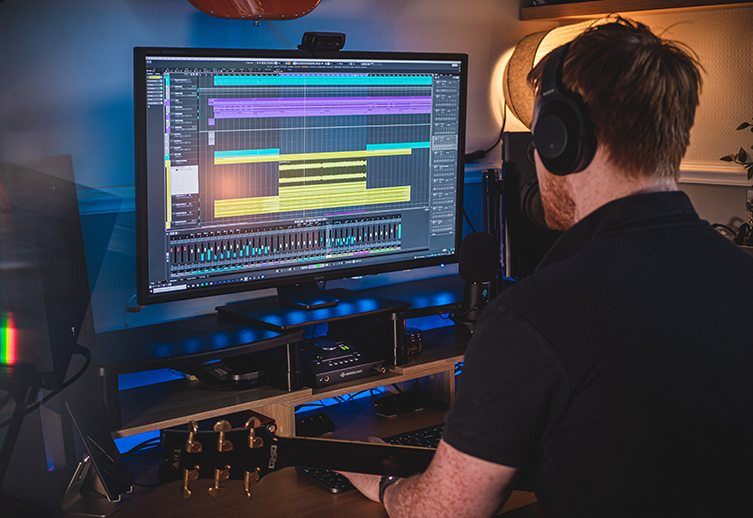
Digital Modellers
Digital modellers are cutting edge multi-fx processors by any other name. They’ve always been around and they’ve always been convenient ways of adding a slew of new sounds to your arsenal, but it’s only in the last decade or so that the collective guitar community has decided that they are ‘real-sounding’ enough to use en masse. Nowadays, top-end pros such as Mark Knopfler, Metallica and (insert name of preferred humongous rockstar here) all choose to ‘go digital’, at least when touring. If it’s good enough for them…
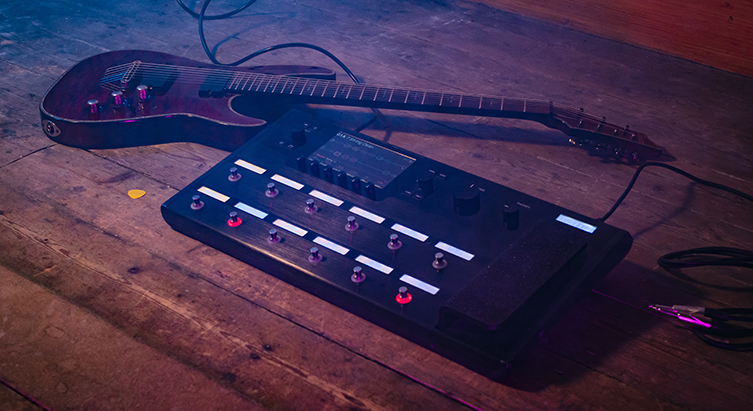
So, there’s a new generation of these processors out there now, and it’s really a matter of personal preference as to which one you choose. The most popular modellers are the following: the Kemper Profiler, Line 6 Helix, Fractal Axe-FX and the newest, the Neural DSP Quad Cortex. Some of these devices (the Helix and the Kemper, for example) are available in both desktop/rack mountable versions and as floor units, whilst the Quad Cortex, though available in one design only, seems uniquely happy in either place!
Sonically, all of these units produce world-class sounds. The real differential here is the editing process. How easy is it for you to create the sounds you want? All manufacturers have their own methods, and whilst all of these units employ digital screens, they all make use of them in different ways. It’s not really up to us to say which is best, since what works well for one player could well be an annoying hassle for another, but some demo time in one of our stores will certainly help you understand each system’s particular process.
Okay, but How Do I Actually Hear it When I’m Playing?
Yes, these units will deliver excellent, realistic tones and fx, but they still need to be plugged into something in order for you to hear them!
For private and/or late-night playing, you can simply connect a set of headphones. Invest in a relatively good pair of closed back headphone monitors from Shure, Roland or Audio Technica and you’ll be able to enjoy the full quality of the audio your setup is producing.
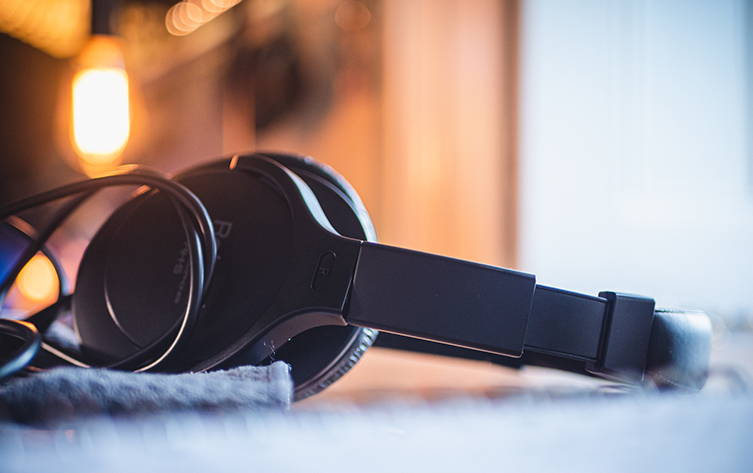
Other options for amplifying digital modellers include plugging them into any old amp you happen to have (the worst idea since it will not be designed for the purpose and therefore sound hugely compromising), or a set of studio monitors (check out KRK, PreSonus, Adam and Yamaha amongst others) which are powered from the mains and can be used in mono or stereo (i.e. you don’t need two), or invest in a dedicated FRFR cabinet.
A what?
An FRFR cabinet is a Full Range, Flat Response speaker cabinet, more or less like a mix between a standard guitar cab and a PA speaker. The idea here is to use something that does not add or subtract anything from your tone: it just takes the signal and puts it out without interfering. Most units these days also allow you to send Impulse Response (IR) data from your modelling unit, which is a way of mimicking the real-world atmospheric and physical properties of the sound, in order to get that ‘feel’ back. This counteracts complaints of your sound otherwise feeling distant or two-dimensional.
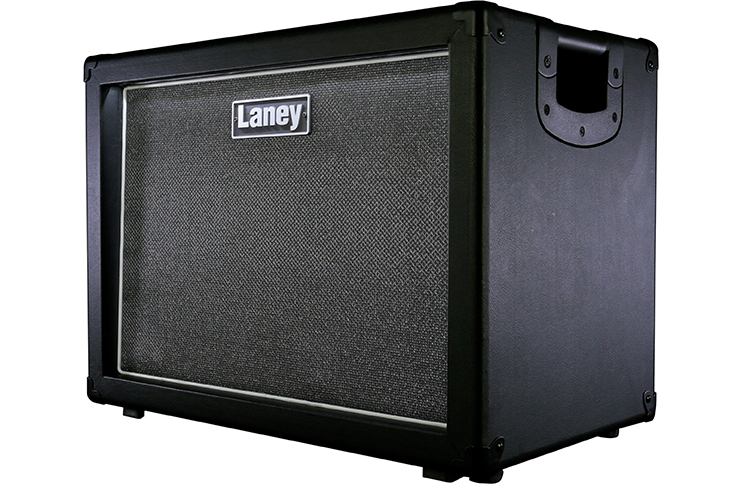
Examples of suitable FRFR cabinets include the Laney LF2 range and the Line 6 Power Cab Plus, but don’t forget that you can use PA speakers too! The IR thing may not translate in the same way, but if your band already owns a PA system, we think it’s worth sneaking one of the speakers into your house for a trial at least!
Going Direct to a Laptop
Nowadays, plugging an electric guitar into a computer is as normal as putting butter on your toast. We’re long out of the cyber Dark Ages, where it took thousands of pounds and a room full of equipment to make a guitar sound even remotely recognisable. Today, it’s a matter of connecting an audio interface to your laptop and installing some software, which we generally refer to as ‘plugins’. The guitar goes into an audio interface (it’s a small box with a USB connection and a bunch of inputs and outputs) using a regular guitar cable, and the interface connects with you computer. The interface (formerly referred to as a ‘soundcard’ back in the days before flushing toilets) is also where you connect monitor speakers, microphones and headphones.
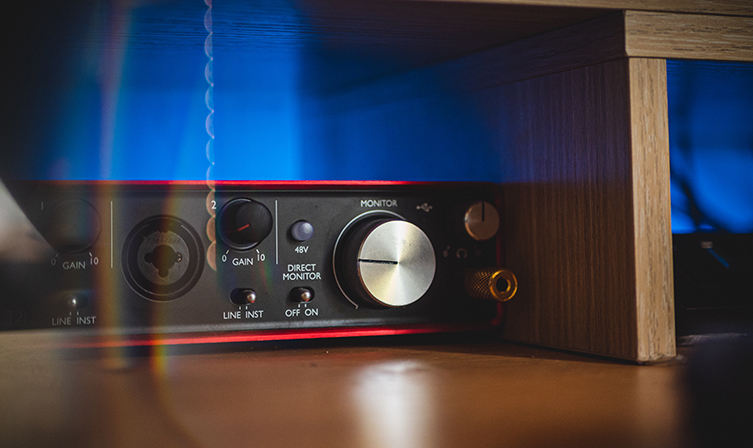
The plugins for guitars are often designed to resemble interactive amps and pedalboards on your computer screen, so you can intuitively select pieces of gear, dial up sounds on the screen and move things around until you like what you’re hearing. Companies like Native Instruments lead the way with their quite excellent Guitar Rig software, and other companies like IK Multimedia (and millions of others) offer their own takes on this, very often with big name artists providing their own signature sounds and virtual rigs.
Obviously, this technology comes to the fore when recording, but there’s zero reason why you can’t adopt all this stuff for your home playing, especially when the quality is as remarkably good as it is today. Most computer-based musicians have good quality monitor speakers already, so these are perfect to listen through as you play. You can also plug in a set of headphones for quieter sessions.
If you already have this stuff, it’s simply a matter of switching your computer on and plugging your guitar in. Easy.
EVERY Guitarist Could Use One of These
It may sound like a heavy sales pitch, but it’s genuinely not. The Fender Mustang Micro showed up for sale around a year ago and it has proven itself to be one of the handiest, most hassle-free ways of getting some home-playing in. The tiny little Mustang unit plugs directly into your guitar instead of a cable, and you attach any set of wired headphones to it. That’s it! Switch it on and get playing. There are 12 amp models and 12 patches of FX (most of which combine a number of effects at once, such as ‘Vintage Tremolo & Reverb, for example). A few straightforward buttons and coloured LEDs help you navigate the sounds in the simplest way imaginable. There’s nothing to it.
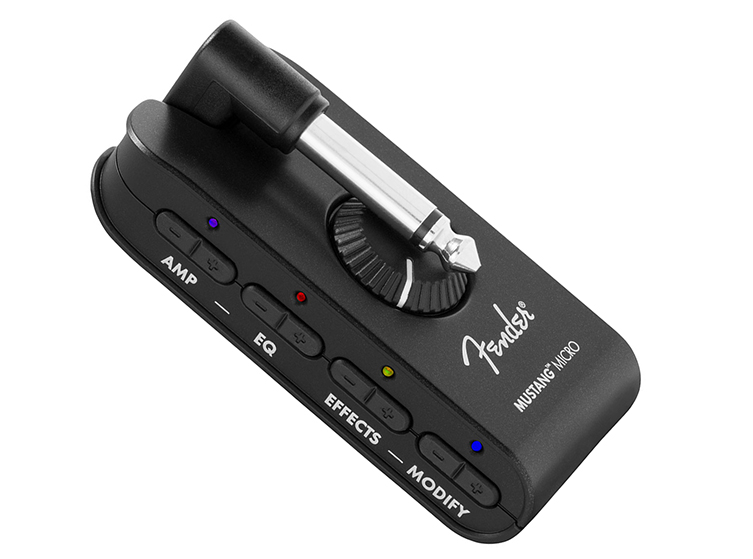
It seems that many of us at guitarguitar now own one of these, and there’s a collective thumbs up about how inviting it feels to quickly plug the little Mustang device in and get going. You just find yourself using it all the time, instead of bothering with cables and amps, as if such things are chores! We’d say that there is definitely room in most player’s lives for a rechargeable device that allows us a good range of decent tones to play with, at a reasonable price. Because you use it with headphones, you can really let go and play whatever you feel like playing, safe in the knowledge that you have no unwitting audience being obliged to listen in. It’s interesting how freeing that can be for your playing!
Whatever it Takes to Get Playing!
We live and breathe guitars and music. So do you, and part of that love is expressing it via playing. Hopefully these different methods outlined today will guide you towards a firm plan for playing electric guitar at home. It’s tough when family members or neighbours object to our beautiful music/horrendous noise, but we do now have lots of excellent ways around this, as we’ve hopefully described today.
If you have the space and the means, it is as big a thrill as ever to plug into a proper valve half stack and blow your brains out with sound, so if you fit that bill, go big! But for the rest of us, there are ways and means of sounding like you're in a stadium without having to earn a night in jail.
Acoustic guitars are a whole other consideration, and that’s why we were specific about playing ‘electric guitar’ in today’s blog. Acoustics can be problematically loud. They can also be quietened down with foam, old t-shirts stuffed in the soundhole, feedback busters over the soundhole etc, but all of that fundamentally changes the sound you get. Also, playing acoustic is an entirely different thing, we feel, and this blog is all about getting busy with electric guitar tones.
We hope you find a path to guitar greatness. Remember, we’re always here for you!



